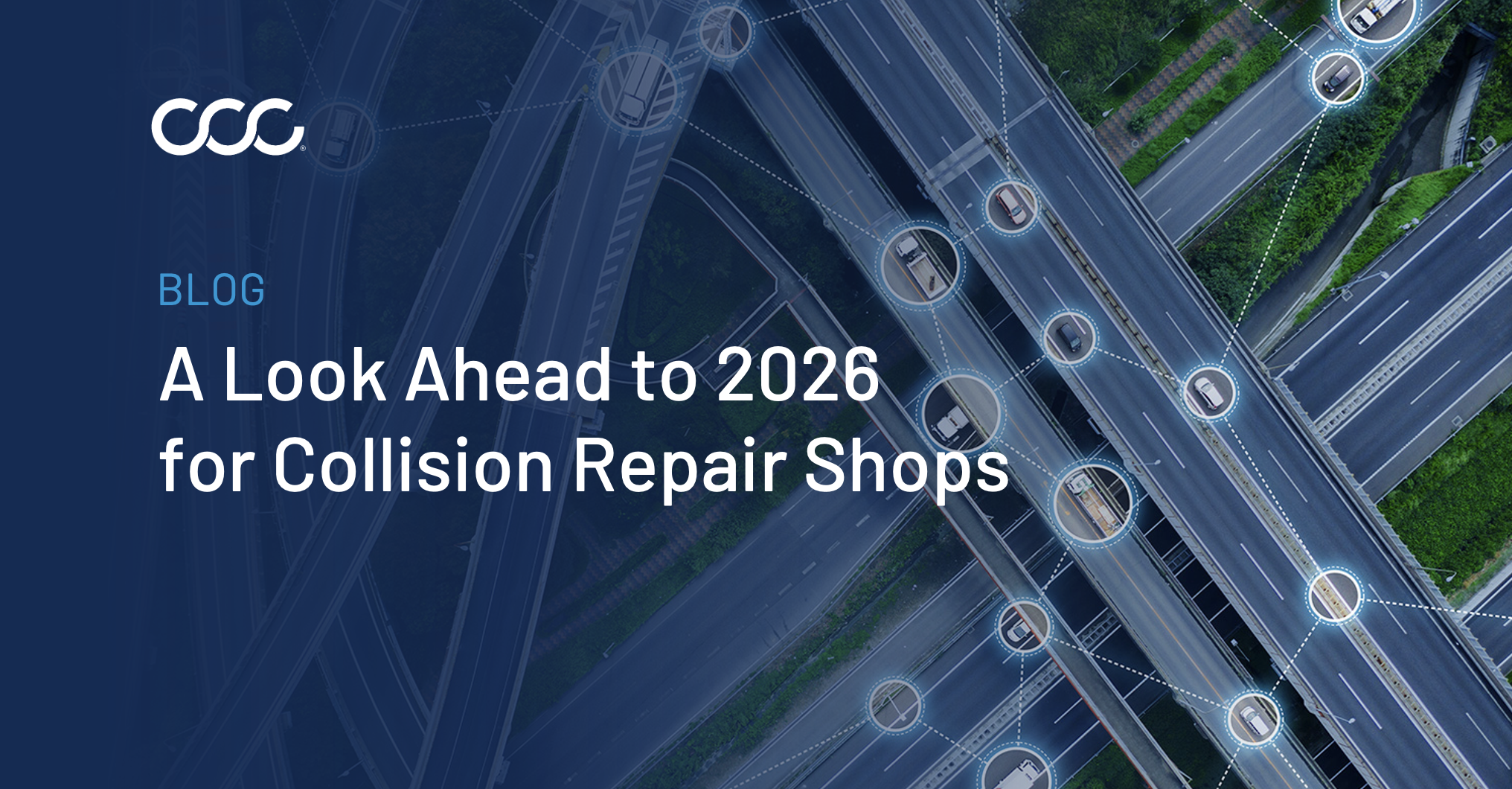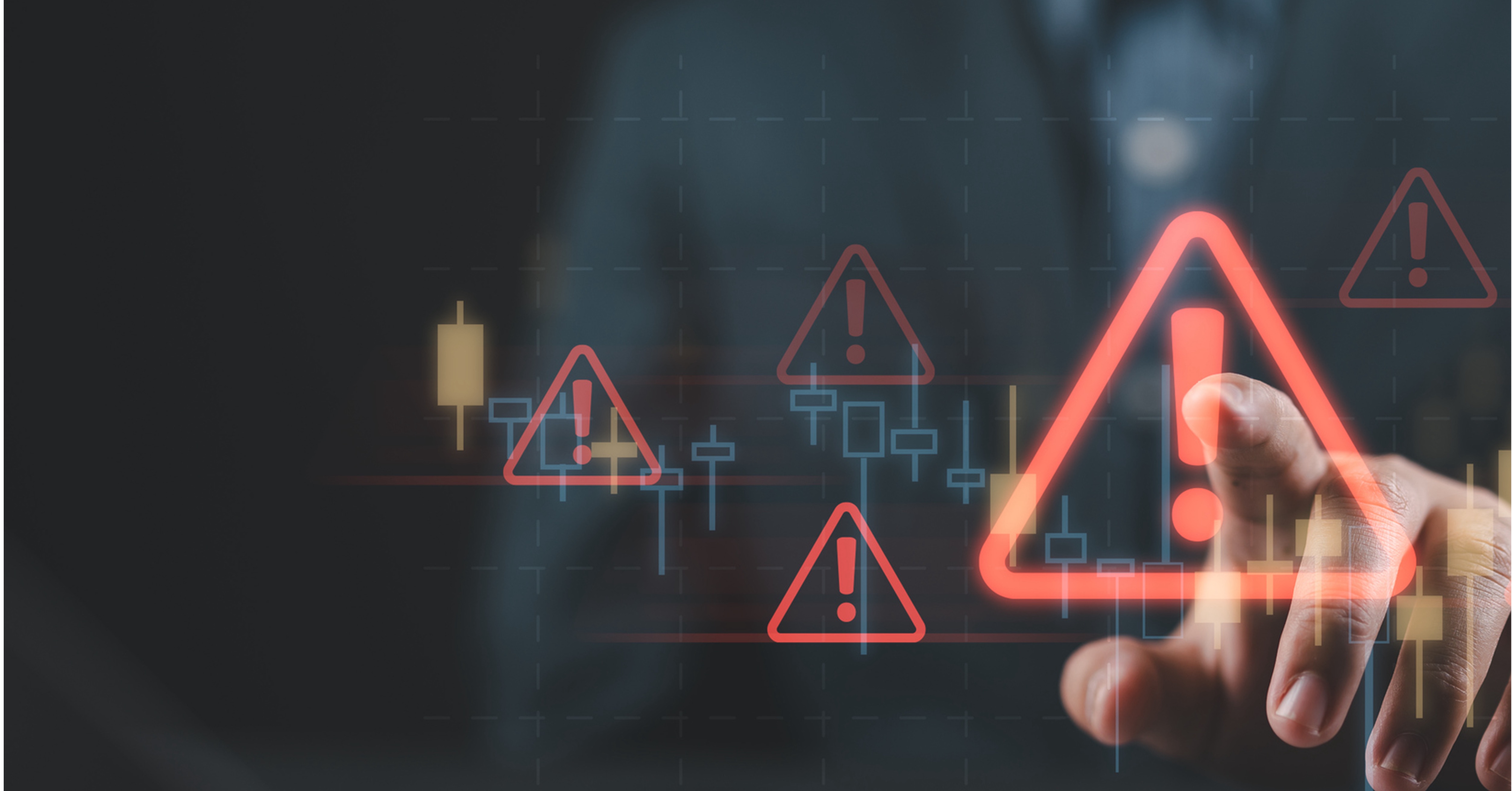Click here to receive monthly CCC Trends reports and other insights
Artificial Intelligence (AI) is changing the way the world solves problems, which is why so many industries are applying this pervasive technology in all sorts of new and exciting ways. Property and casualty (P&C) insurers, for example, have become increasingly reliant on AI to help manage costs, reduce fraud, streamline customer communication, reduce claim cycle times, and so much more. As such, AI usage in the P&C insurance industry has grown significantly, but we may still be in the early days of the true impact this technology will have on the industry beyond its ability to streamline claims and delight policyholders.New data from CCC reveals that more than 100 of the 150+ carriers that currently allow policyholders to send photos of vehicle damage via CCC's platform are applying AI to inform decisions across the life of the claims, including next steps for a repair. Indeed, the company reports that 28% of repairable claims today are now being initiated via photos. (Figure 1).

This pivot toward embracing AI technology should come as no surprise given the results of a 2021 survey that CCC conducted with insurers, which found that 70% of respondents rated AI as “highly important” to meeting their organization’s business goals (Figure 2).

That desire, along with the many runways still available, indicates significant adoption to come.According to a 2022 Gartner® report "What to Do With All That Data: The Top Areas Where AI Is Applied in Insurance," AI is not yet commonly deployed in insurance firms, despite the breadth of use cases. Only 43% have already deployed AI for any application across their firms. That doesn’t mean that they don’t have plans, however. Ninety-two percent of executives have deployed or expect to deploy AI at their organizations.[1]There's good reason for the growing opportunity and use cases for AI. An April 2020 study commissioned by CCC found that more than 80% of policyholders prefer a digitized claims process because it's user-friendly and can cut the claims cycle time by as much as a third, when mobile, AI and telematics are applied.Growth in AI AdoptionAs a market leader, CCC regularly reports AI adoption among its customers to track progress, and according to our 2023 AI Adoption report, we saw a 60% year-over-year increase in the application of advanced AI for claims processing.The data also revealed that more than 14 million unique claims have been processed through 2022 using a CCC computer vision AI solution. This marks a 3X increase in the number of unique claims processed since the beginning of the pandemic.And AI isn’t just being used to process more claims, it’s driving more end-to-end decisions across the entire claims management experience. In fact, the number of claims processed with four or more of CCC’s AI applications has more than doubled, year-over year.So, with AI now deeply embedded into claims workflows, is it "mission accomplished" for the P&C insurance industry, or have we set ourselves up for something even bigger?Future AI Capabilities & ApplicationsMarket dynamics are necessitating more, and while some macro trends like supply chain issues will subside with time, other factors, including labor shortages and increasing vehicle complexity will require even more AI and intelligence to meet the demands of today’s consumer and drive business outcomes for insurers and repairers alike.This comes at a time when AI is moving beyond its understood ability to help systems make smarter decisions and more seamless connections. As evidenced by the burgeoning number of AI-enabled chatbots, artists, and even biotech and pharmaceutical innovators, AI's capabilities are expanding beyond workflow enhancements and automation – it's generating original content and imagery. This is clearly a step change forward with startling possibilities.As discussed in the P&C insurance industry today, AI is being applied at key stages within the claims process and has proven its worth by cutting cycle time, improving consumer experiences, and increasing efficiency of scarce labor resources.But tomorrow’s AI, enhanced and combined with advanced analytics and physics, could be applied at scale for multiple stages throughout the claims process – from FNOL to payments, and across repairable, total loss, and casualty claims.Future AI models will more thoroughly leverage existing and expanded connections across providers, creating more intelligent, straight-through experiences across every aspect of the claims and repair resolution process. An early hint of what is possible is evidenced by the fact that under some circumstances AI can even auto-generate a complete line level repair estimate in seconds without human intervention. This was unheard of a few short years ago and is indicative of newer technologies enabling more rapid change.While the next iteration of AI is exciting and brimming with possibility, it will also require businesses to focus on a few key priorities to ensure the best outcomes.AI Implementation ConsiderationsWith the step change in AI capability combined with more aggressive integrations to ecosystem services now becoming more evident, it is incumbent on P&C insurance businesses to think about the potential of this technology. Many tasks in their current processes that are labor-intensive and high-touch are becoming lower-touch, with some becoming no-touch, in certain circumstances.That enables consideration of whether these tasks are mission-critical differentiators and thus should continue to be done the same way, or if not, could provide a path to rebalance scarce resources from those functions and use them to create better experiences that differentiate the organization going forward. These experiences take advantage of AI's success automating data-intensive tasks with such speed and precision that it allows humans to focus on work that requires their emotional intelligence, empathy, and personal judgment.Either way, the data is clear: the number of AI-processed claims is climbing and along with it, opportunity for insurers to streamline their businesses while at the same time delivering better customer experiences. Exactly how will this occur? Let's just say we have an exciting time ahead of us. Stay tuned.
Click here to receive monthly CCC Trends reports and other insights
[1]2022 Gartner Data and Analytics Transformation Survey: “What to Do With All That Data: The Top Areas Where AI Is Applied in Insurance. GARTNER is a registered trademark and service mark of Gartner, Inc. and/or its affiliates in the U.S. and internationally and is used herein with permission. All rights reserved.
Click here to receive monthly CCC Trends reports and other insights
Artificial Intelligence (AI) is changing the way the world solves problems, which is why so many industries are applying this pervasive technology in all sorts of new and exciting ways. Property and casualty (P&C) insurers, for example, have become increasingly reliant on AI to help manage costs, reduce fraud, streamline customer communication, reduce claim cycle times, and so much more. As such, AI usage in the P&C insurance industry has grown significantly, but we may still be in the early days of the true impact this technology will have on the industry beyond its ability to streamline claims and delight policyholders.New data from CCC reveals that more than 100 of the 150+ carriers that currently allow policyholders to send photos of vehicle damage via CCC's platform are applying AI to inform decisions across the life of the claims, including next steps for a repair. Indeed, the company reports that 28% of repairable claims today are now being initiated via photos. (Figure 1).

This pivot toward embracing AI technology should come as no surprise given the results of a 2021 survey that CCC conducted with insurers, which found that 70% of respondents rated AI as “highly important” to meeting their organization’s business goals (Figure 2).

That desire, along with the many runways still available, indicates significant adoption to come.According to a 2022 Gartner® report "What to Do With All That Data: The Top Areas Where AI Is Applied in Insurance," AI is not yet commonly deployed in insurance firms, despite the breadth of use cases. Only 43% have already deployed AI for any application across their firms. That doesn’t mean that they don’t have plans, however. Ninety-two percent of executives have deployed or expect to deploy AI at their organizations.[1]There's good reason for the growing opportunity and use cases for AI. An April 2020 study commissioned by CCC found that more than 80% of policyholders prefer a digitized claims process because it's user-friendly and can cut the claims cycle time by as much as a third, when mobile, AI and telematics are applied.Growth in AI AdoptionAs a market leader, CCC regularly reports AI adoption among its customers to track progress, and according to our 2023 AI Adoption report, we saw a 60% year-over-year increase in the application of advanced AI for claims processing.The data also revealed that more than 14 million unique claims have been processed through 2022 using a CCC computer vision AI solution. This marks a 3X increase in the number of unique claims processed since the beginning of the pandemic.And AI isn’t just being used to process more claims, it’s driving more end-to-end decisions across the entire claims management experience. In fact, the number of claims processed with four or more of CCC’s AI applications has more than doubled, year-over year.So, with AI now deeply embedded into claims workflows, is it "mission accomplished" for the P&C insurance industry, or have we set ourselves up for something even bigger?Future AI Capabilities & ApplicationsMarket dynamics are necessitating more, and while some macro trends like supply chain issues will subside with time, other factors, including labor shortages and increasing vehicle complexity will require even more AI and intelligence to meet the demands of today’s consumer and drive business outcomes for insurers and repairers alike.This comes at a time when AI is moving beyond its understood ability to help systems make smarter decisions and more seamless connections. As evidenced by the burgeoning number of AI-enabled chatbots, artists, and even biotech and pharmaceutical innovators, AI's capabilities are expanding beyond workflow enhancements and automation – it's generating original content and imagery. This is clearly a step change forward with startling possibilities.As discussed in the P&C insurance industry today, AI is being applied at key stages within the claims process and has proven its worth by cutting cycle time, improving consumer experiences, and increasing efficiency of scarce labor resources.But tomorrow’s AI, enhanced and combined with advanced analytics and physics, could be applied at scale for multiple stages throughout the claims process – from FNOL to payments, and across repairable, total loss, and casualty claims.Future AI models will more thoroughly leverage existing and expanded connections across providers, creating more intelligent, straight-through experiences across every aspect of the claims and repair resolution process. An early hint of what is possible is evidenced by the fact that under some circumstances AI can even auto-generate a complete line level repair estimate in seconds without human intervention. This was unheard of a few short years ago and is indicative of newer technologies enabling more rapid change.While the next iteration of AI is exciting and brimming with possibility, it will also require businesses to focus on a few key priorities to ensure the best outcomes.AI Implementation ConsiderationsWith the step change in AI capability combined with more aggressive integrations to ecosystem services now becoming more evident, it is incumbent on P&C insurance businesses to think about the potential of this technology. Many tasks in their current processes that are labor-intensive and high-touch are becoming lower-touch, with some becoming no-touch, in certain circumstances.That enables consideration of whether these tasks are mission-critical differentiators and thus should continue to be done the same way, or if not, could provide a path to rebalance scarce resources from those functions and use them to create better experiences that differentiate the organization going forward. These experiences take advantage of AI's success automating data-intensive tasks with such speed and precision that it allows humans to focus on work that requires their emotional intelligence, empathy, and personal judgment.Either way, the data is clear: the number of AI-processed claims is climbing and along with it, opportunity for insurers to streamline their businesses while at the same time delivering better customer experiences. Exactly how will this occur? Let's just say we have an exciting time ahead of us. Stay tuned.
Click here to receive monthly CCC Trends reports and other insights
[1]2022 Gartner Data and Analytics Transformation Survey: “What to Do With All That Data: The Top Areas Where AI Is Applied in Insurance. GARTNER is a registered trademark and service mark of Gartner, Inc. and/or its affiliates in the U.S. and internationally and is used herein with permission. All rights reserved.







